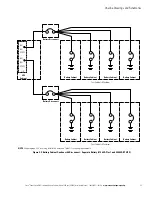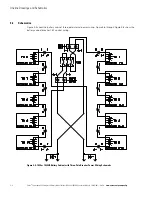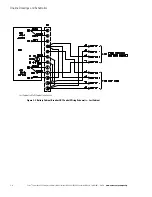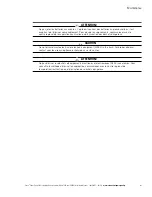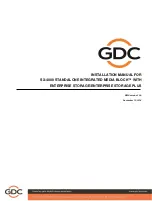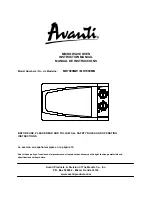
Eaton
®
Power Xpert 9395 Integrated Battery Cabinet (Model 1085 and 1085HR) Installation Manual 164201687—Rev 06
www.eaton.com/powerquality
6-1
Chapter 6
Maintenance
The components inside the battery cabinet are secured to a sturdy metal frame. All repairable parts and
assemblies are located for easy removal, with very little disassembly. This design allows authorized service
personnel to perform routine maintenance and servicing quickly.
You must schedule periodic performance checks of your battery system to keep it running properly. Regular
routine checks of operation and system parameters enable your system to function efficiently for many
trouble-free years.
6.1
Important Safety Instructions
WARNING
l
Servicing and maintenance should be performed by qualified service personnel only.
l
LETHAL VOLTAGE PRESENT. This unit should not be operated with the cabinet doors open or
protective panels removed. Do not make any assumptions about the electrical state of any in
the UPS system.
Because each battery string is an energy source in itself, opening the battery circuit breaker does not
de-energize the voltage within the battery string.
DO NOT ATTEMPT TO ACCESS ANY INTERNAL AREA OF
THE BATTERY STRING YOURSELF. VOLTAGES ARE ALWAYS PRESENT IN THE BATTERY STRING.
If
you suspect that a battery string needs service, contact an Eaton service representative.
If the string requires service, refer to the battery manufacturer's operating manual for instructions on battery
maintenance or contact an Eaton service representative.
Observe these precautions when working on or around batteries:
l
Remove watches, rings, or other metal objects.
l
Use tools with insulated handles.
l
Wear rubber gloves and boots.
l
Do not lay tools or metal parts on top of batteries.
l
Disconnect the charging source prior to connecting or disconnecting terminals.
l
Determine if the battery is inadvertently grounded. If it is, remove the source of the ground. Contact with
any part of a grounded battery can result in electrical shock. The likelihood of such shock is reduced if such
grounds are removed during installation and maintenance.
l
When replacing batteries, use the same number of sealed, lead-acid batteries.
l
Proper disposal of batteries is required. Refer to your local codes for disposal requirements.
l
Do not dispose of batteries in a fire. Batteries may explode when exposed to flame.
l
Do not open or mutilate batteries. Released electrolyte is harmful to the skin and eyes. It may be toxic
6.2
Performing Preventive Maintenance
The battery cabinet requires very little preventive maintenance. However, the system should be inspected
periodically to verify that the units are operating normally and that the batteries are in good condition.
6.2.1
DAILY Maintenance
Perform the following steps daily:
1.
Check the area surrounding the battery cabinet. Ensure the area is not cluttered, allowing free access to
the unit.











